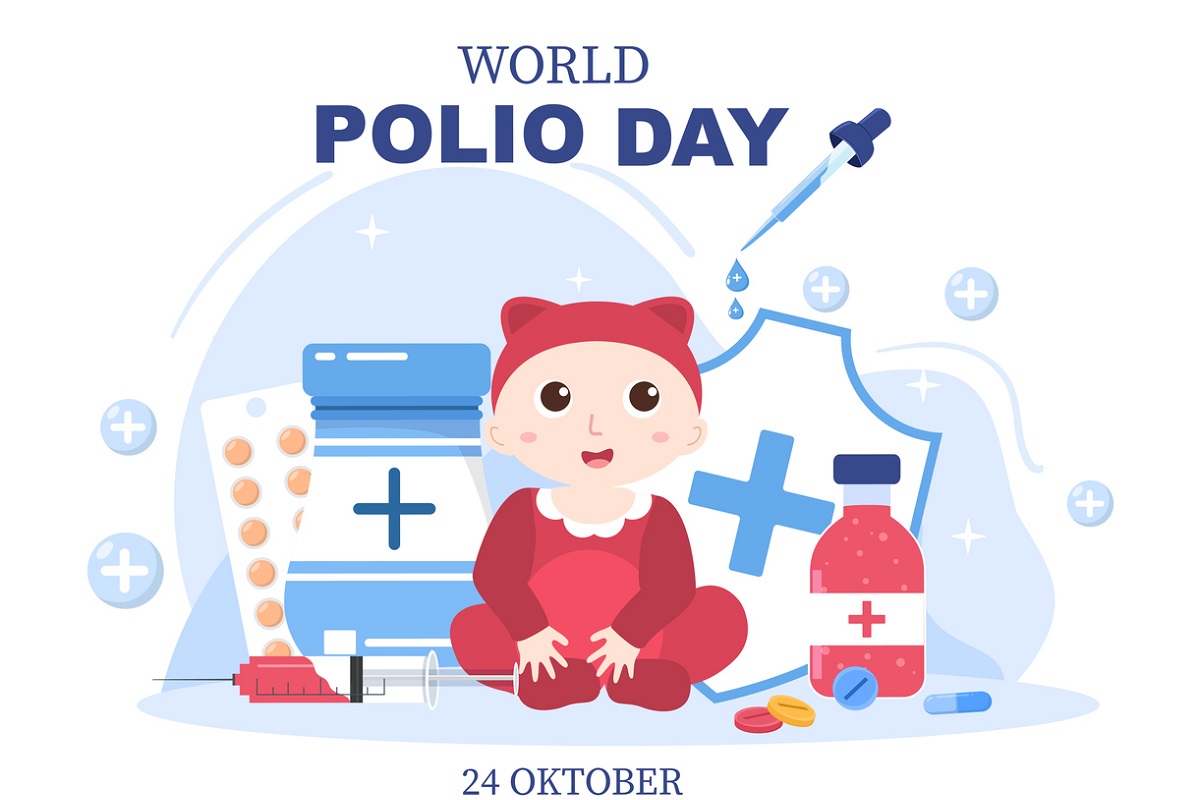Protecting people from devastating pandemics is a crucial public health objective for governments and healthcare organizations alike. Polio-like COVID-19 – is a highly contagious disease against which the entire world has fought tooth and nail. But, given that we have not completely eradicated polio, we wonder this World Polio Day, are we and our children safe from this seemingly dormant threat?
The answer to that question is a complicated one. One thing that COVID-19 has taught everyone is that a virulent virus can travel swiftly across geographies, which is why India must guard its hard-earned immunity against polio as stringently as possible.
Advertisement
There was a time when India accounted for more than 60 per cent of all polio cases in the world. Starting in October 1994, a concentrated effort by the government, Rotary, and its partners in the Global Polio Eradication Initiative (GPEI) achieved remarkable success in the Pulse Polio Immunization program. The project bore fruit when India was declared ‘polio-free’ by the World Health Organization (WHO) in March 2014 along with the other countries in WHO’s South-East Asia region.
Today there is a fear that mass migrations may export the wild poliovirus type 1 (WPV1) to other nations, which according to the WHO, is the only strain currently active (wild poliovirus type 2 and type 3 have been wiped out). Specifically, the type 1 wild virus continues to circulate in the neighbouring countries of Afghanistan and Pakistan.
Although there has been one reported case of WPV1 in each country this year to date, the government of India remains cautious, and authorities are quick to vaccinate India-bound refugees against polio. It is still extremely important that we remain vigilant and protect border areas to prevent WPV1 from slipping into the country through proactive immunization practices and surveillance and screening techniques – tactics India has been using to try to control the spread of COVID-19.
We must also guard against potential outbreaks from another polio strain that could develop if not enough children in any given community are vaccinated. Specifically, the weakened poliovirus contained in the oral polio vaccine (OPV) can start to circulate, and over time can change to a form that causes paralysis in under-immunized populations. This variant is called circulating vaccine-derived poliovirus (cVDPV) and type 2 is the most common strain.
Thus, circulating vaccine-derived poliovirus type 2 (cVDPV2), primarily occurring in Africa and Asia, remains a key concern. Although the risk of cVDPV2 outbreaks in India remains low thanks to strong protocols in the country that assure newborns are well-immunized, Pakistan and Afghanistan have had cases. So, the polio program must remain prepared and continue to strengthen routine immunization campaigns as it also deploys new tools—like the novel oral polio vaccine type 2 (nOPV2) that carries less risk of changing to a harmful form.
Lastly, disruptions caused by COVID-19 are impacting polio eradication and other global health efforts. While the infrastructure built to end polio in India has been used to help contain the coronavirus, it must be noted that routine immunizations overall have been significantly impacted.
According to data released by the Indian government’s National Health Mission (NHM), March 2020 saw child immunization for measles, mumps, and rubella (MMR) dip by around 70 per cent over the previous year. Now, the government must refocus on routine child immunization and other surveillance programs to prevent vaccine-preventable diseases from spreading.
In hindsight, the effort to end polio has taught us many lessons on how to manage a public health crisis and has informed our COVID-19 response efforts. Thanks to our hard-fought battles against polio, we’ve learned the value of ensuring equitable access to vaccines and launching strong campaigns against vaccine hesitancy.
Yet India has more work to do if we are to ensure polio remains a largely neutralized threat within the country. It is important for policymakers and organizations to carry out routine immunization programs and conduct ‘catch up’ initiatives to cover those who may have missed out on immunizations. In a globalized era, even sporadic polio outbreaks in neighbouring countries need to be monitored and proactively managed. And although polio cases around the world have been reduced by more than 99.9 per cent since the formation of the GPEI in1988, as long as polio circulates anywhere, all children are at risk. We must remain committed to making polio a disease of the past for everyone, everywhere.
(By Deepak Kapur, Chairperson, Rotary International’s India National Polio Plus Committee (RI-INPPC) and vice-chair of Rotary’s COVID-19 Task Force in India. The views expressed are personal)











